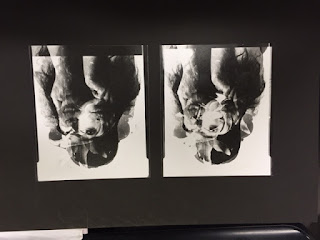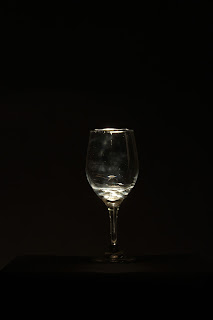The process I chose to do for my final prints was cyanotype. For this we just needed 2 chemicals and the rest was household stuff you could pick up out the kitchen. I chose to do this one as it was a much cheaper option than going down the other alternative processes. Another reason was the colour of the final blue are an amazing tonal ranges of blue with add to any image. For this we will be using the 5x4 negatives to create my images.
The Process:
What we need:
- 25 grams of Ferric ammonium citrate (green)
- 10 grams of Potassium ferricyanide
- Water (distilled if possible)
- Scale or measuring spoons
- Measuring jug
- 3 glass containers for mixing ingredients
- Plastic spoons
- Face mask (DIY style)
- Goggles
- Rubber gloves
- Apron or old shirt
- Newspaper to cover work surface
- Cleaning cloth
- Brushes or coating rod
- Clothes pegs (plastic)
- Washing line or rope (plastic)
- Art paper or fabric for coating
- Sunshine or a UV light source
This recipe makes approximately 50 8×10 inch prints.
The soultion:
- Solution A: 25 grams Ferric ammonium citrate (green) and 100 ml. water.
- Solution B: 10 grams Potassium ferricyanide and 100 ml. wate
Dissolve the chemicals in water to make two separate solutions. Add Ammonium ferric citrate to water into one container and Potassium ferricyanide to water in another. Stir with a plastic spoon until the chemicals dissolve. Mix equal quantities of each solution together in a third container. Unused solutions can be stored separately in brown bottles away from light, but will not last very long once they have been mixed. Dispose of any unused chemicals in a sensible and environmentally friendly way!
Your floors, carpets, walls, work surfaces, clothes and skin can be stained by the chemicals. Cover all possible areas, use rubber gloves and an apron or an old shirt to work in. If you have the space, choose an area where you can spread out. Ordinary light bulbs or tungsten light is safe to use, but UV light will affect your prints. Some fluorescent lighting may also affect your prints.
Preparing the canvasUsing a brush, simply paint the chemicals onto the material. Paper, card, textiles or any natural material can be used to print on. Decide how big your print is going to be, and cut your material to size. Make sure your working area is dimly lit, or lit with a low-level tungsten bulb. Once the material is coated, leave it to dry in the dark.
Print a cyanotype by placing your negative (to reproduce a photograph) or object (to make a photogram) in contact with your coated paper or fabric. Sandwich it with a piece of glass. Expose the sandwich to UV light. Natural sunlight is the traditional light source, but UV lamps can also be used. A photogram can also be made by placing items on the surface. Plants, decorative items or other objects can be used to create silhouettes or interesting shapes. Exposure times can vary from a few minutes to several hours, depending on how strong your lightsource is or the season where you are printing.
Processing and drying
When the print has been exposed, process your print by rinsing it in cold water. The wash also removes any unexposed chemicals. Wash for at least 5 minutes, until all chemicals are removed and the water runs clear. Oxidation is also hastened this way – bringing out the blue color. The final print can now be hung to dry and be admired.
I have also tried double exposures and developing negatives, and salt prints. As a group we each chose a different process to do so we ended up helping each mix up solution coating paper and exposing the negatives. We all ended up with a range of different processes and images which was really interesting to get to do.

























































